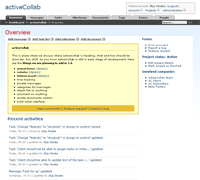by R.I. Pienaar | Sep 26, 2006 | Usefull Things
Recently I had to buy up some domains for my employer – iTouch – so I typed into a domain registrar the word itouch to see what it came up with, what was available etc.
It also showed me a bunch of suggestions of other similar domain names:

It’s wonderful, IsItWorthTheHurt, ItWillHurt, ItHurt these are great and a lot of ex-itouch people will want to rush out and buy some of these I am sure, but the best of the lot has to be WhyDoesItHurtWhenIPee, priceless.
by R.I. Pienaar | Aug 30, 2006 | Photography, Usefull Things
Yesterday Flickr announced the previously leaked new feature, an integration of Yahoo! Maps and Flickr.
It is very slick, the integration between Organizr and the maps is way kewl and it does not suffer from the problem of making a mess of your Tags like some of the other options as it maintains an internal data structure.
Their map placing method isn’t too accurate but if you open up a photos properties you can type in exact coordinates which is nice. Searching for photos is now even greater, you can search for photos matching a keyword near a location, or simply explore photos at a specific spot which is great.
The problem is of course that they use Yahoo! Maps, it’s crap unless you live in the states. Resolution and street level maps in Europe and elsewhere leaves much to be desired. It is also much slower than Google Maps.
Today Flickr posted an update to their blog firstly pointing out the amazing uptake in use of this feature in the first 24 hours:
When we were doing our projections for how many photos Flickr members would geotag, we though that we’d hit Spiral Jetty a million in the first month, maybe even as fast as two weeks. Instead, 24 hours in, there were 1,234,384 geotagged photos (and now more than 1.6 million geotagged photos as I write this, about 9 hours later). Crazy!
That is impressive! they also acknowledge the Yahoo Maps problem and I hope they can work with the maps team to quickly address this, though I am not holding my breath, more likely is someone will take the new API calls that Flickr provide and write a mashup using Google Maps that uploads data into this new internal data structures.
I dragged a couple 100 photos onto the map, you can take a look at a map of these here.
by R.I. Pienaar | Jul 30, 2006 | Usefull Things
I’m in the middle of decomissioning some old sites and thought I’d post some info about our FreeBSD 4.x based firewalls that we were running.
Barry and Neil put these together when they were still with iTouch, they are FreeBSD machines running ipfw, modified natd, IPSec and jails for nameservers using bind. They’ve proven incredibly reliable more reliable than anything I’ve every seen before, first some uptimes:
4.3-RELEASE-p28 FreeBSD 4.3-RELEASE-p28 #0
8:56AM up 1175 days, 14:25, 1 user, load averages: 0.01, 0.00, 0.00
4.3-RELEASE FreeBSD 4.3-RELEASE #3: Thu Aug 9 08:24:10 SAST 2001
8:55AM up 1353 days, 13:07, 1 user, load averages: 0.07, 0.03, 0.00
4.3-RELEASE FreeBSD 4.3-RELEASE #3: Thu Aug 9 08:24:10 SAST 2001
8:57AM up 1636 days, 12:16, 2 users, load averages: 0.01, 0.02, 0.00
That last machine was put in the 2nd day I arrived in the UK almost 4.5 years ago now. There has been a few security issues since these were put in, the biggest were Bind issues and a IPSec issue, but none of them really huge deals for us due to the nature of these issues.
Some packet counts through their diverts:
11000 14873464727 9086343964578 divert 8668 ip from any to any via sf0
11010 2694675129 2230790516204 divert 8668 ip from any to any via sf2
11020 21332945704 16515209189995 divert 8668 ip from any to any via sf1
11030 2190579388 1838075424554 divert 8668 ip from any to any via em1
11040 31142270005 26337236597684 divert 8668 ip from any to any via sf3
11000 12363062208 6728197633745 divert 8668 ip from any to any via fxp0
11050 13585672383 7625773331834 divert 8668 ip from any to any via sf0
11075 1672241479 943217267415 divert 8668 ip from any to any via sf1
11000 9709855806 3616673887622 divert 8668 ip from any to any via fxp0
11010 15438460240 7026578427847 divert 8668 ip from any to any in recv sf0
11015 18623997883 6347362524481 divert 8668 ip from any to any out xmit sf0
11020 7574307452 2981257820300 divert 8668 ip from any to any in recv sf1
11025 6957613786 2361008898017 divert 8668 ip from any to any out xmit sf1
11030 5520959014 1551914815579 divert 8668 ip from any to any in recv sf2
11035 8724539029 2097991945468 divert 8668 ip from any to any out xmit sf2
11040 2988122935 604858451646 divert 8668 ip from any to any in recv sf3
11045 3930006137 632095496483 divert 8668 ip from any to any out xmit sf3
11050 3842161713 3177937890519 divert 8668 ip from any to any in recv fxp1
11055 4106903810 3282379599303 divert 8668 ip from any to any out xmit fxp1
These aren’t the bussiest machines by far, but they moved quite a bit of data, keep in mind these counters were probably reset quite a few times over the time to aid in debugging problems. One interface in the top bunch has done 23 TB.
I don’t really like these long uptime machines, they are a constant cause of worry for me, you dont know if all the configs were saved, you dont know if they’ll ever come up after a reboot etc, once you’ve gone over 500 days I think you’re pretty much at a point where rebooting machines becomes a bit of a worry to me, as these are/were firewalls the problem is much worse since the impact of them not booting or configs going missing would be massive, arranging downtime though isn’t always easy either, but I think worth the effort in hind sight.
by R.I. Pienaar | Jul 28, 2006 | Usefull Things
This morning came news of a remote exploitable vulnerability in Apache mod_rewrite, the exploit is pretty difficult and requires weird setups on your side, but you should be upgrading all your kit.
More info at Secunia
A vulnerability has been reported in Apache HTTP Server, which potentially can be exploited by malicious people to compromise a vulnerable system.
The vulnerability is caused by a off-by-one error in mod_rewrite and can be exploited to cause a one-byte buffer overflow.
Successful exploitation may crash the web server process or allow execution of arbitrary code.
by R.I. Pienaar | Jul 7, 2006 | Usefull Things
A year or so ago I had an account with Basecamp, the very successful project management system that spawned Ruby on Rails. I really liked it but the project manager at work didn’t so it kind of fizzled out and eventually I cancelled the $99/month account that we had.
You can try Basecamp for free on a single project and I’ve used it on and off since then, but it’s not been ideal for me to use a hosted service. I tried a number of other products like dotproject. Yesterday I came across a Digg article about activeCollab, it is a GPL licensed Basecamp like project management tool currently in Alpha release.
It requires PHP 5 which I didn’t have on any machine as it seems each of my machines has some code on that only works on PHP 4 but I did a quick install of it on a VMware machine and fell in love with it then put in the effort to fix up a PHP 5 on one of my servers. It is great, even in its Alpha state it is usable and reasonably bug free. I came across one error in tasks which I sent a patch about back to the authors other than that it works a charm.
Click the screenshot below for a view of it, or grab it from http://www.activecollab.com/

by R.I. Pienaar | Apr 6, 2006 | Usefull Things
I’ve been a fan of virtualization for some time, been a very early user of VMWare years ago in fact version 2 of my iScan appliction was written entirely inside VMWare while stuck in a hotel in Athens around 2001. Things since then has come a long way especially on Intel hardware.
Intel has introduced their Virtualization Technology extensions on their recent chips to enable the CPU to run multiple operating systems on the actual CPU, much like main frames have been able to do for ages.
Virtualization enhanced by Intel Virtualization Technology will allow a platform to run multiple operating systems and applications in independent partitions. With virtualization, one computer system can function as multiple “virtual” systems. With processor and I/O enhancements to Intel’s various platforms, Intel Virtualization Technology can improve the performance and robustness of today’s software-only virtual machine solutions.
I’ve been very excited to get my hands on both hardware and software together that lets me explore this exciting technology and today that was delivered in the form of my Apple iMac Core Duo machine running Parallels Workstation.
Parallels Workstation 2.0 is the first desktop virtualization solution to include a lightweight hypervisor, a mature technology originally developed in the 1960s to maximize the power of large mainframes. Hypervisor technology dramatically improves virtual machine stability, security and performance by using a thin layer of software, inserted between the machine’s hardware and the primary operating system, to directly control some of the host machine’s hardware profiles and resources. It not only makes Parallels Workstation-powered virtual machines secure, stable and efficient, but also empowers users to immediately realize the benefits associated with Intel VT hardware virtualization architecture.
The good thing is it works on OS X on Intel hardware and allows you to run most operating systems. I grabbed a copy of FreeBSD 6.0 and immediately knew it was fast, only later did I realise how fast.
I wanted to see if I can get my 2nd Core to appear as a 2nd CPU in the guest system so I built the included GENERIC SMP kernel, the build time was just short of 17 minutes. The VM was allocated 256Mb RAM and was running on my 1800mhz Intel iMac. At the time I had Thunderbird, Deerpark, NetNewsWire, Terminal, Adium, Activity Monitor and MS Word (under Rosetta) open.
I then took my AMD 1800Mhz with 512Mb RAM machine also running FreeBSD 6.0 and did the same build, the build time on that was 18 minutes.
I realise this isn’t the most scientific of tests, but it far exceeds any performance indication on any VM I’ve ever seen, I’m really looking forward to one day having a Bladecenter full of machines capable of running this technology and doing a full VMWare based architecture, the advantages that virtualization brings to the table is staggering. If you ever get a chance to see a real demo of VMWare’s enterprise products I’d strongly suggest you jump at the oppertunity.



